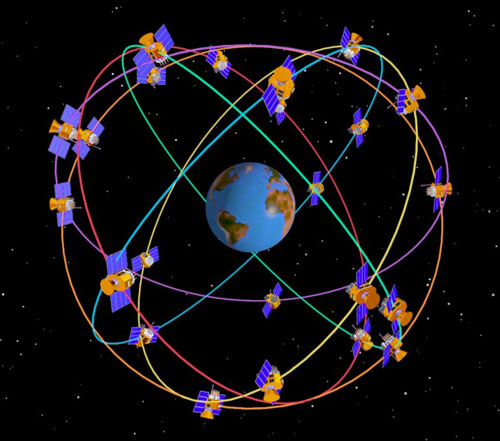How does a GPS tracking system work
Publish Date:: 2011-5-30 Author/From:: GPS/wtd

Global Positioning System (GPS) is a worldwide radio-navigation system formed from the constellation of 24 satellites and their ground stations. The Global Positioning System is mainly funded and controlled by the U.S Department of Defense (DOD). The system was initially designed for the operation of U. S. military. But today, there are also many civil users of GPS across the whole world. The civil users are allowed to use the Standard Positioning Service without any kind of charge or restrictions.
Global Positioning System tracking is a method of working out exactly where something is. A GPS tracking system, for example, may be placed in a vehicle, on a cell phone, or on special GPS devices, which can either be a fixed or portable unit. GPS works by providing information on exact location. It can also track the movement of a vehicle or person. So, for example, a GPS tracking system can be used by a company to monitor the route and progress of a delivery truck, and by parents to check on the location of their child, or even to monitor high-valued assets in transit.
A GPS tracking system uses the Global Navigation Satellite System (GNSS) network. This network incorporates a range of satellites that use microwave signals that are transmitted to GPS devices to give information on location, vehicle speed, time and direction. So, a GPS tracking system can potentially give both real-time and historic navigation data on any kind of journey.
GPS provides special satellite signals, which are processed by a receiver. These GPS receivers not only track the exact location but can also compute velocity and time. The positions can even be computed in three-dimensional views with the help of four GPS satellite signals. The Space Segment of the Global Positioning System consists of 27 Earth-orbiting GPS satellites. There are 24 operational and 3 extra (in case one fails) satellites that move round the Earth each 12 hours and send radio signals from space that are received by the GPS receiver.
The control of the Positioning System consists of different tracking stations that are located across the globe. These monitoring stations help in tracking signals from the GPS satellites that are continuously orbiting the earth. Space vehicles transmit microwave carrier signals. The users of Global Positioning Systems have GPS receivers that convert these satellite signals so that one can estimate the actual position, velocity and time.
The operation of the system is based on a simple mathematical principle called trilateration. Trilateration falls into two categories: 2-D Trilateration and 3-D Trilateration. In order to make the simple mathematical calculation the GPS receiver must know two things. First it must know the location of the place is to be traced by at least three satellites above the place. Second, it must know the distance between the place and each of those Space Vehicles. Units that have multiple receivers that pick up signals from several GPS satellites at a same time. These radio waves are electromagnetic energy that travels at the speed of light.
A GPS tracking system can work in various ways. From a commercial perspective, GPS devices are generally used to record the position of vehicles as they make their journeys. Some systems will store the data within the GPS tracking system itself (known as passive tracking) and some send the information to a centralized database or system via a modem within the GPS system unit on a regular basis (known as active tracking) or 2-Way GPS.
A passive GPS tracking system will monitor location and will store its data on journeys based on certain types of events. So, for example, this kind of GPS system may log data such as where the device has traveled in the past 12 hours. The data stored on this kind of GPS tracking system is usually stored in internal memory or on a memory card, which can then be downloaded to a computer at a later date for analysis. In some cases the data can be sent automatically for wireless download at predetermined points/times or can be requested at specific points during the journey.
An active GPS tracking system is also known as a real-time system as this method automatically sends the information on the GPS system to a central tracking portal or system in real-time as it happens. This kind of system is usually a better option for commercial purposes such as fleet tracking or monitoring of people, such as children or elderly, as it allows a caregiver to know exactly where loved ones are, whether they are on time and whether they are where they are supposed to be during a journey. This is also a useful way of monitoring the behavior of employees as they carry out their work and of streamlining internal processes and procedures for delivery fleets.

